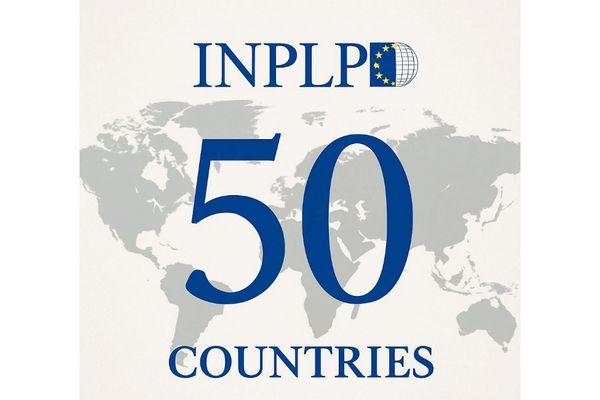Latest publications

#23 - Enabling Cloud Adoption Across Europe
How Software Escrow can help organisations manage risk in the cloud
Authors: Jamie Mackay, Charles Brooks, Martin Andenmatten
...
Cloud computing undoubtedly offers considerable advantages and great benefits over traditional IT operating models. Marc Andreessen penned his famous “Why Software Is Eating the World” essay in The Wall Street Journal five years ago. And yet many questions about the associated risks remain unanswered. Also the questions about liability and access to software solutions, which were provided on behalf of customers. Are escrow agreements also possible in the cloud and what needs to be considered here?
This white paper gives answers to those questions. It was created in a cooperative process between EuroCloud Switzerland, Glenfis and NCC Group experts Jamie Mackay and Charles Brooks who with great personal commitment, assumed the leading role in terms of content - elaborating every detail over several sessions with me.
We hope you’ll find it useful on your journey to successfully transforming your financial service solution into the cloud.
Zürich, September 2019

#22 - The Looming Clouds
How and why cloud services are reshaping the future of financial services in Europe
Authors: Guido Greber, Konstantin Yershov
...
The financial services industry is confronting challenges across the globe. Externally, it must deal with new regulatory demands for greater transparency, new consumer demands, shareholders calling for faster growth and higher margins, and disruptive competition from both familiar and non-traditional actors. Internally, financial services firms grapple with legacy systems, ossified IT systems, and more.
Cloud computing offers many attractive benefits in this context. Chief among them are the ability to strengthen and streamline a firm’s IT ecosystem, lower operational costs, and shorten time-to-market windows. Cloud computing can make a wide range of financial services operations cheaper, faster, safer, and smarter.
Yet a surprising number of firms have yet to take the plunge and implement a robust cloud strategy. Recent surveys suggestion that 43 percent of banks do not have a cloud strategy or have only started implementing basic cloud practices, Two-thirds say that fewer than half of their business lines are currently using the cloud.
This paper will trace the drivers of change across the financial services industry to illustrate the trend towards cloud computing. Common challenges banks encounter on their drive to the cloud will then be discussed. We will conclude with some discussion of how banks can overcome these challenges.
This Whitepaper was created in a cooperative process between Guido Greber Technology Advisory from Accenture and Konstantin Yershov. Financial Services Solution Architect from Red Hat: both proven financial services and cloud management experts.
We hope you’ll find it useful on your journey to successfully transforming your financial service solution into the cloud.
Zürich, February 2019

#21 - A Consideration of accelerated migration of on-premises VMs to the Google Cloud platform using streaming technologies
TECHNICAL STUDY
Authors: Kamil Glowinski, Mag. Christian Gossmann, Andreas Krawinkler
...
By using cloud services, organizations can provide their application and server landscape through a pool of resources. That there is no way around cloud solutions in terms of elasticity and competitiveness, has meanwhile penetrated to most companies. However, the migration and successive “cloudification” of the servers and services often represents a major obstacle for many companies. In many cases, it lacks or fails in a migration strategy, or in the know-how of the persons involved. An essential migration component to a cloud service provider is the automated migration of services and servers to such. In such a project, IT service providers and IT departments are equally required to contribute their experience and to keep the degree of automation very high, if possible. It is important to analyze the processes and to work out which steps can be carried out fully automatically. Without automation, there are many sources of error and little chance of success.
This document focuses on the accelerated movement of virtual servers and their applications using streaming technology to a cloud service provider. The primary consideration is the technology of the solution used and the availability and liability SLAs. In the concrete case of application, the example of the challenge of such an endeavor is shown and an attempt is made to clarify the resulting difficulties and risks.

#21 - Betrachtung einer beschleunigten Migration von on-premises VM’s in die Google Cloud Plattform mittels Streaming Technologien
TECHNISCHES STUDIUM
Autoren: Kamil Glowinski, Mag. Christian Gossmann, Andreas Krawinkler
...
Durch die Verwendung von Cloud Diensten bietet sich Unternehmen die Möglichkeit ihre Applikations- und Serverlandschaft über einen Pool von Ressourcen bereitzustellen. Dass in Sachen Elastizität und Wettbewerbsfähigkeit kein Weg an Cloud Lösungen vorbeiführt, ist mittlerweile zu den meisten Unternehmen durchgedrungen. Die Migration und sukzessive “Cloudifizierung” der Server und Services stellt allerdings für viele Firmen oftmals einen großen Hemmschuh dar. Vielfach fehlt oder scheitert es an einer Migrationsstrategie, bzw. am Know-how der handelnden Personen. Eine wesentliche Migrations- Komponente zu einem Cloud Service Provider stellt das automatisierte migrieren der Services und Server zu einem solchen dar. Bei einem derartigen Vorhaben sind IT-Dienstleister und IT–Abteilungen gleichermaßen gefordert ihre Erfahrung einzubringen und den Automatisierungsgrad nach Möglichkeit sehr hoch zu halten. Wichtig ist dabei, die Abläufe zu analysieren und herauszuarbeiten welche Schritte vollautomatisch durchgeführt werden können. Denn ohne Automatisierung gibt es erheblich viele Fehlerquellen und kaum Erfolgsaussichten.
Dieses Dokument fokussiert sich auf das beschleunigte Verschieben von virtuellen Servern und deren Applikationen mittels Streaming Technologie zu einem Cloud Service Provider. Primär wird dabei die Technologie der verwendeten Lösung und die SLAs betreffend Verfügbarkeit und Haftung betrachtet. Im konkreten Anwendungsfall wird durch ein Beispiel die Herausforderung eines solchen Unterfangens gezeigt und versucht, die dabei entstehenden Schwierigkeiten und Risiken zu verdeutlichen.

#20 - Cloud Brokerage
Introduction to the concept, its business model, the associated challenges and their potential solutions.
...
The following article represents the first part of a three-part series on cloud service certifications and personal certifications in the area of cloud computing along with their importance and areas of application, with a focus on EuroCloud StarAudit.
This first part deals with the topic of cloud brokerage, covering the definition of terms, various business models and challenges of cloud brokers and their approaches to solutions.
The second article discusses the need for and business case of cloud service certifications as well as the difference between certifications and quality seals or attestations. It also includes a market overview featuring basic descriptions of the individual certifications and selected or publicly accessible requirement catalogues. These catalogues are then compared to the requirement catalogue of the EuroCloud StarAudit certification.
The third and last article deals with the importance and significance of personal certifications and presents the StarAudit Academy, its individual accreditations and their added value.
The aim of this series of articles is to raise awareness and demonstrate the need for and undeniable benefits of cloud service certifications such as EuroCloud StarAudit.
This guideline was created over the course of more than one year in a cooperative process between EuroCloud and the author Mr. Norbert Fesel, whom I wish to thank for the efforts.
I hope that you enjoy reading this guideline and can benefit from it in your day-to-day work.

#19 - Security analysis of a cloud backup service based on a smart site failover
TECHNICAL STUDY
Authors: Kamil Glowinski, Andreas Krawinkler, Christian Gossmann (Cloud Computing Engineering, Fachhochschule Burgenland)
...
The opportunities in the cloud computing sector are characterized by rapid growth. This development is based on manyfold causes from both a technical and monetary point of view. Cloud solutions have become important competitive factors in the hosting industry and data center operators. The growing supply of cloud providers and their quality also increases the pressure on on-premises data centers, which inevitably causes many IT departments to be compared and measured against external cloud providers.
Cloud computing offers companies many new opportunities, but at the same time presents them with new challenges. Today, many decision makers of medium-sized and large companies consider cloud services to be important and necessary in order to optimize their own business processes and to be future-proof and competitive. In many cases, the question of data security and compliance is asked in this context and triggers uncertainty and discomfort in the participants.
This document focuses on the backup, failover, and recovery of a virtual component (server) to a cloud service provider, and considers primarily the security aspect of interfaces, as well as any weaknesses and risks of such solutions. In the case of specific application, the example of the challenge of such an endeavor is shown and an attempt is made to clarify the resulting challenges and risks.
Latest News
GDPR knows no exceptions: Neither cities nor giants are safe!
The Office for Personal Data Protection of the Slovak Republic recently ruled in two cases that clearly show...
A new member has joined the INPLP: Gustavo Vilera
Gustavo Vilera is a Venezuelan attorney and partner at FFV Legal, based in Caracas. He holds a law degree from the...
Polish Supreme Administrative Court Requires DPAs to Prove Identifiability...
In a significant judgment issued on 16 October 2025 (III OSK 2595/22), the Polish Supreme Administrative Court...
Romania and the EU AI Act: Ready or Just Warming Up?
Artificial Intelligence is reshaping industries and societies worldwide. As the European Union rolls out the AI...
A new member has joined the INPLP: Rachel O’Brien
O’Brien Legal is a boutique Auckland firm specialising in privacy, data protection and AI governance, supported by...
The 10th INPLP Conference
The 10th Conference of the INPLP took place in Barcelona and was a tremendous success, bringing together...
INPLP Reaches 50 Countries
Reaching 50 countries.
What once felt like a distant dream has become reality: INPLP now connects privacy...
Using Face Recognition Systems in Commercial Premises
Bulgarian Data Protection Authority recently published a statement on the admissibility of using videosurveillance...
Closing the Gap: Paraguay Advances Toward Comprehensive Data Protection
Paraguay is on the verge of adopting its first General Law on the Protection of Personal Data, closing a...
New members have joined the INPLP: Lucia Cantera, Isabel Mendez, Virginia...
Cervieri Monsuarez is an international law firm, with offices in Uruguay, Paraguay, Bolivia and Anguilla. With...
The New Era of Privacy and Data Protection in Mexico: What’s Changing?
The Mexican legal system has undergone an unprecedented transformation in the past few months. This has impacted...
Due Diligence Obligations in the Spain: Lessons learnt from AEPD Sanctions and...
Amid the EU's rapidly evolving due diligence landscape, this article unpacks Spain’s tough stance on data...
Harmonising Data Protection Legislation across the Commonwealth Caribbean
Can the Commonwealth Model Provisions on Data Protection (“CMP”) drive harmonisation of the collection and...
The year 2024 was a very busy one for the Macedonian Personal Data Protection...
The Macedonian Personal Data Protection Agency adopted a new Strategy for the implementation of the right to...
MONACO STRENGTHENS ITS LEGAL FRAMEWORK FOR THE PROTECTION OF PERSONAL DATA: NEW...
This article outlines Monaco Law no. 1.565 of 3 December 2024 on personal data protection, and the activity of the...
The emerging contours of ‘Verifiable Parental Consent’ under India’s new Data...
India’s new data privacy law will change the way in which data processors collect and process children’s data, by...
Partners

Aguilar Castillo Love
Costa Rica

HEKA LAW FIRM
Ecuador

Özdağıstanli Ekici Attorney Partnership
Turkey

William Fry
Ireland

BGBG
Mexico

Legal IT Abogad@s
Panama

Arthur Cox LLP
Arthur Cox LLP

Stephenson Harwood LLP
United Kingdom

Seyfarth Shaw
Hong Kong

BTG Legal
India

Gerrish Legal SARL
France

ECIJA GPA
ECIJA GPA
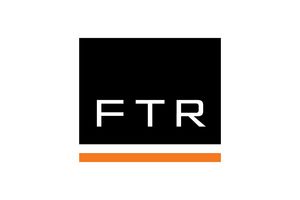
FTR
Brazil

OYAT
France

Dentons Paz Horowitz
Ecuador

SimpLEGAL
Hungary

Spirit Legal
Germany

Marval O’Farrell Mairal
Argentina

Sourcing International
Austria

esb legal

99 AVOCATS ASSOCIES
Monaco

PwC Legal
Estonia

Time.lex
Belgium

Bort & Bird
Poland

Lexing
France

Malta IT Law
Malta

Wolf Theiss
Romania

Kambourov & Partners
Bulgaria

R&P Legal
Italy

JK Group
Slovenia

Nielsen Legal
Czech Republic

EuroLawyer
Austria

C-Lex
Italy

Synch
Sweden

BCH Chlipala
Slovakia

Zeya
Greece

Derra, Meyer & Partner
Germany

Laux Lawyers
Switzerland

Abreu Advogados
Portugal

CIE

Cordemeyer & Slager

Tassos Papadopoulos & Associates

Andersen Tax & Legal

Womble Bond Dickinson

Etude Reding

International Cybersecurity Forum 2019

Astrea

Gun+Partners

BCSC

Business Reporter

Stankovic & Partners

Boris Guljas

Fox Rothschild

ICENT
Croatia

AHW Law

OBLP

de la cruz beranek Attorneys at Law Ltd
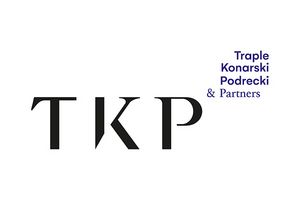
Traple Konarski Podrecki & Partners

Molitor

Matsuda & Partners
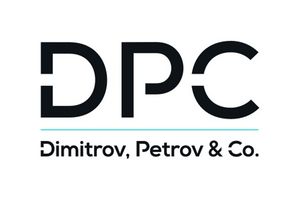
Dimitrov, Petrov & Co.

Alliance Law Firm

Setterwalls

Bona Fide

ALV

Gowling WLG

Živković Samardžić

advores Advokater & Rechtsanwälte
Denmark

BELEN ARRIBAS SANCHEZ

ECIX
Spain

Naschitz, Brandes, Amir & Co., Advocates
Israel

AYR Lawyers
Israel

MLL Legal Ltd
Switzerland

Bermúdez & Esguerra Abogados
Colombia

Han Kun
China
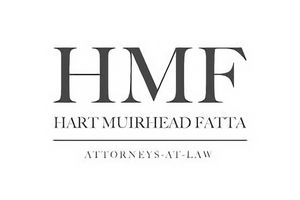
Hart Muirhead Fatta
Jamaica
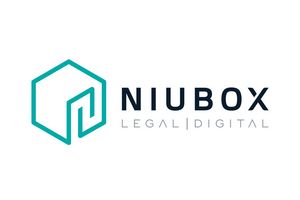
Niubox
Peru

Arochi & Lindner, S.C.
Mexico











